Exhibition Resources
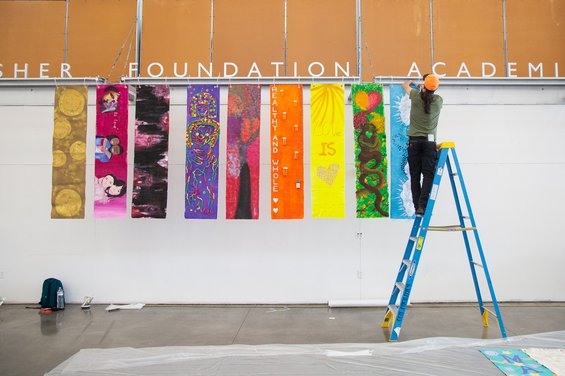
PAGE OUTLINE
EXHIBITION PLANNING
Artwork Checklist
The Google Sheet Exhibition Artwork Checklist can be used to collect information about each artwork to be included in your exhibition. To use it make a copy to your Google Drive.
Gathering checklist information will help with:
- Exhibition Labeling - We recommend that you include an exhibition brochure for your entire show or wall labels for each artwork in your exhibition to provide information for visitors (templates provided below). Having this information collected in one spreadsheet will streamline making exhibition brochures and wall labels.
- Curation/Floorplan - With the dimensions of each artwork and the floorplan of the gallery you can do the math and create an exhibition floorplan that illustrates the placement and spacing for each piece. While this helps to streamline the installation process, it is common to make adjustments while actually installing.
- Installation - Having dimensions, brief descriptions and notes helps streamline installation. This information can help with preparing for installation and will be used during installation.
Condition Report
A condition report is a document used to record details about the physical appearance of an artwork in order to track changes in the artwork's condition over time as it is shipped, exhibited, and stored. A condition report should be filled out just after unpacking or receiving an artwork and just before packing to ship or store an artwork.
- Creating a Condition Report for Artwork - an article with tutorial videos and condition report templates by the Joan Mitchell Foundation.
EXHIBITION TEXTS AND GRAPHICS
We recommend making wall text or a brochure to provide information about the overall exhibition as well as each artwork. Below are Adobe Illustrator templates for Wall Labels and Exhibition Brochures.
Artwork Labels
Adobe Illustrator Wall Label Template for 8.5"x11" Card Stock - Can be trimmed to size. Template designed by former Exhibitions Work Study Graphic Designer Miko (Mingke) Yu. Please note that the descriptive texts in this template are 12 pt. This should be increased to at least 16 pt. wherever possible.
Wall labels for artworks can be made by printing on card stock paper and cutting the printed sheet along the guide marks with a sharp blade an a straight edge.

Exhibition Brochure
Exhibition Brochure Template
This Adobe Illustrator template is designed to help you create a brochure for your exhibition using 14" x 8.5" paper. The template includes a gallery floor plan that can be used to identify artworks, if wall labels don't fit into your exhibition design.
Adobe Illustrator Brochure Template - Please note that wherever possible, the font in this template should be increased to a minimum of 16 pt. If this is not possible, a separate, large-font copy of the text in this brochure should be made available at the gallery's front desk.
Example of a Brochure Made Using This Template - A Brochure for Surfacing Histories, Sculpting Memories, presented at the CCA Hubbell Street Galleries in September 2019.
Vinyl
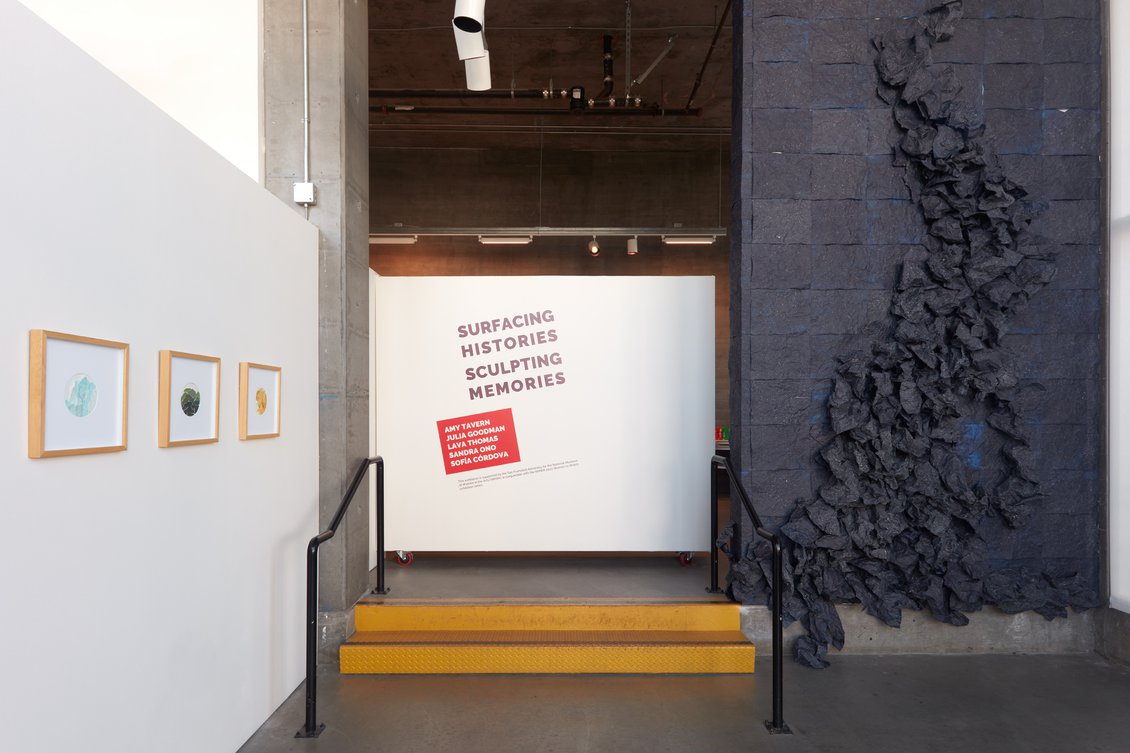
Below is an Adobe Illustrator template you can use to help you get started on your vinyl wall text design.
Adobe Illustrator wall text template (48" x 48")
Example of File Exported for Vinyl Cutter - A PDF containing the outlines of the brighter text/shape in the vinyl pictured above.
Example of File Exported for Vinyl Cutter - A PDF containing the outlines of the darker text in the vinyl pictured above. Remember to create separate PDFs for each color included in your vinyl design so they can be cut from different color vinyl sheets (and remember to tell the vinyl cutter what color the texts/shapes in each PDF should be!).
ART HANDLING AND INSTALLATION
Hardware and Materials
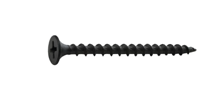
Drywall Screws
Drywall screws can be used to create hanging points on a wall or to fasten something to a wall. They are easily attached with a drill and come in multiple lengths. NOTE: drywall screws should be used on walls that are made of plywood, walls that are plywood backed, when they are able to penetrate wooden studs or in conjunction with drywall anchors. Drywall is a brittle material and will likely crumble if drywall screws are used in drywall alone.
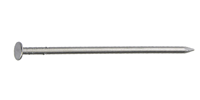
Nails
Nails can be used to create hanging points on a wall or to pin a plywood, foam board, or unstretched canvas to a wall. Nails bend easier than screws while maintaining their strength so they can easily be bent to adjust the level of an artwork they are holding or bent upward to prevent D-rings or wire from slipping off.
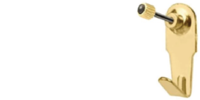
Picture Hanging Hooks
Picture hanging hooks are nailed into a wall to create points to hang artworks that are prepared with D-rings or picture hanging wire. Picture hanging hooks cause minimum damage to the wall and are designed to hold a good amount of weight when used on walls made of drywall.
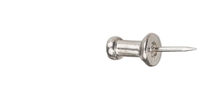
Push Pins
Push pins are sharp, thin pins with various kinds of heads that can be quickly pushed or gently hammered into walls and make tiny holes. They can be used to pin paper, textile or other thin, lightweight materials to a wall, typically by puncturing the work in strategic locations (for example: all four corners of a rectangular piece). They can also be used to hang lightweight works that have been prepared with hanging wire. Since they are easy to insert and make small holes, they are a good option for roughing out installations.

Map Pins
Map pins are short metal pins with spherical heads that can be used to pin thin paper or textile works to a wall by puncturing through the material. They are essentially small push pins.
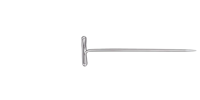
T-pins
T-pins are metal pins with T shaped heads that come in various sizes, typically between 1 and 2 inches in length (the longer ones tend to be thicker and stronger). T-pins can be used to pin lightweight paper or textile works to a wall by piercing them.
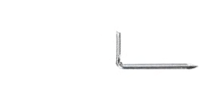
L-nails
L-nails can be used to hold thin, rigid, lightweight, and unframed artworks to a wall, such as works on thn plywood or mat board.
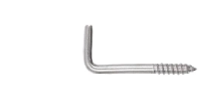
L-screws
L-screws come in multiple sizes, are good for holding rigid and unframed artworks to a wall, and are good for creating strong hanging points. Since they come in various sizes L-screws are able to accommodate various wights and thicknesses (up to about an inch). Like drywall screws, they should not be used in drywall alone unless they are holding something lightweight.
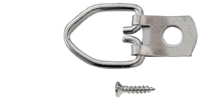
D-rings
D-rings can be screwed to the back of an artwork to create points to hang the work directly from or points to connect picture hanging wire.
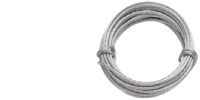
Picture Hanging Wire
Picture hanging wire can be attached to an artwork to create a structure to hang the work from. Typically picture hanging wire is attached to artwork with two D-rings or eye screws. Works that have been prepared with picture hanging wire can be hung on picture hanging hooks, nails, screws, or push pins.
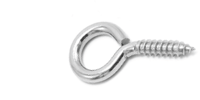
Screw Eyes
Screw eyes are screws with a loop instead of a head and are available in a variety of sizes. Screw eyes can be used to create points on an artwork to attach picture hanging wire. They can also be attached to a wall or ceiling to create attachment points that cords can be tied or clipped onto. When using screw eyes to create attachment points (or rigging points) it is important to ensure that the screw eye is solidly anchored into wood or an anchor that is rated to hold more than the weight it will be supporting.
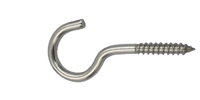
Screw Hooks
Screw hooks are like eye screws that have a hook instead of a closed loop for a head.
USES
- to hold a rod that runs through a pole pocket of a textile piece
- to suspend something that has a loop but cannot be untied or opened
- to create a hanging point that will be interacted with by the audience
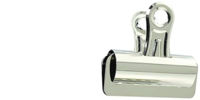
Bulldog Clips
Bulldog Clips can be used with nails or L-pins to hang unframed paper and textile works.
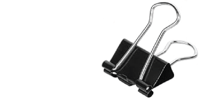
Binder Clips
Binder clips can be used to hang lightweight and unframed paper and textile works.
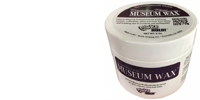
Museum wax
Museum wax is a material that can be put on the bottom of a solid, freestanding, three-dimensional artwork to stabilize it on a horizontal surface. Museum wax can be cleanly removed from non-porous materials with warm water.

Monofilament
Monofilament or fishing line is cord material that is typically translucent, and colorless. Monofilament has a weight rating which indicates the amount of weight it can lift before breaking. Monofilament can be used to suspend lightweight artworks.
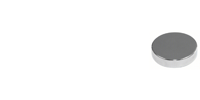
Disc Magnets
Disc magnets can be used with screws, nails, or other magnetic metal to hold thin, lightweight materials like paper or fabric to a wall. Magnets have the potential to slip over time with the weight of the artwork and air movement so we do not recommend using them to hang precious artworks or to hang works in high traffic or outdoor locations.
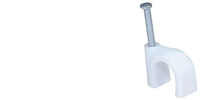
Cable Clips
Cable clips are used to hold wires to a wall, typically in order to organize power, audio, video and computer cords to reduce their visual impact.
Additional Resources
Smithsonian Guidelines for Accessible Exhibition Design - This guide describes best practice for accessible exhibition design as legislated by the Architectural Barriers Act of 1968, the Rehabilitation Act of 1973, and the Americans with Disabilities Act of 1990. It describes inclusive label text and design, artwork placement, audiovisual and interactive artwork controls and labels, gallery circulation routes, and more.
The J. Paul Getty Museum Complete Guide to Adult Audience Interpretive Materials: Gallery Texts and Graphics - This guide outlines the various types of texts and graphics offered to adult visitors to the J. Paul Getty Museum at both the Getty Center and the Getty Villa. It provides examples of effective vinyl wall texts, wall labels, diagrammatic texts, brochures, and more, complete with recommendations for typography, font sizes, and voice.
Museums & Galleries of NSW Exhibition Labelling Guide - This brief guide outlines how best to label objects within exhibitions for effective interpretation and navigation.
Video Tutorial: Documenting your Artwork with an iPhone, by aftrART - Tips for photographing small 2D and 3D work with any smart phone (not just iPhones!).
Video Tutorial: How to photograph your artwork, by Royal Academy of Arts - Tips for photographing 2D work with a DSLR camera.
Video Tutorial: Photographing Your Artwork - No studio lights needed, by Wim Bals - More tips for photographing artwork with a smart phone or DSLR camera.
Video Tutorial: How to Photograph Artwork without a Glare, by Caleigh Bird - Tips for photographing shiny artwork without expensive equipment.
Video Tutorial: How Do I Avoid Glare When Photographing My Artwork?, by ArtResin - Tips for photographing shiny artwork using professional equipment. This video gives the most comprehensive review of camera settings, lighting tricks, and photoshop editing.
Article: Documentation, by GYST - Tips for photographing, video-recording, and lighting your artwork with various kinds of equipment, as well as tips for organizing and submitting documentation to museums, curators, etc.

